The RØDECaster Revolution: How RØDE Simplified Streaming Audio and Changed the Game
(Section 1) Introduction: The Streamer’s Audio Struggle
Before 2018, the path to achieving professional-sounding audio for live streams and podcasts often felt like navigating a labyrinth. Creators, particularly those without a deep background in audio engineering, faced a daunting task: assembling a complex web of disparate components. A typical setup might involve an audio interface, perhaps from brands like Focusrite or Behringer, to get microphone signals into the computer. Often, a separate mixer (like popular models from Yamaha or Mackie ) was needed to handle multiple inputs. Powering notoriously gain-hungry dynamic microphones, such as the industry-standard Shure SM7B, frequently required an additional preamp or signal booster like a Cloudlifter. Add to this the challenge of triggering sound effects or jingles, which might necessitate dedicated hardware or software, and the need for convoluted software routing solutions like Voicemeeter Banana or Virtual Audio Cable to manage the intricate mix of game audio, chat applications, music, and microphone feeds. This piecemeal approach resulted in a tangle of cables, potential compatibility headaches, a steep learning curve, and a significant barrier for creators aiming for polished audio quality.
During this era, Elgato established itself as a dominant force in the streaming peripheral market. Their capture cards, like the Game Capture HD and later the 4K60 Pro models , were essential for bringing console or camera footage into the stream. Perhaps even more iconic was the Elgato Stream Deck , a customizable control surface that revolutionized stream management, allowing creators to trigger scenes, alerts, and actions with the press of a button. However, while Stream Deck provided powerful control over various stream elements, including potentially triggering software mixers or sound effects, Elgato did not offer an integrated audio mixing console solution at the time. Their direct foray into audio interfaces, the Wave XLR, wouldn’t arrive until mid-2021. Consequently, streamers often used Elgato gear to manage their broadcast, but the core audio processing and mixing relied on a collection of hardware and software from other manufacturers, leaving a clear gap for a dedicated, integrated audio solution.
This landscape set the stage for Australian audio manufacturer RØDE. In 2018, they launched the original RØDECaster Pro, boldly marketed as “the world’s most powerful all-in-one solution for podcasting”. This device wasn’t just another mixer; it was a purpose-built console designed specifically to consolidate the essential functions of podcasting and, as it quickly turned out, streaming audio production into a single, user-friendly unit. It aimed to demystify professional audio, making high-quality production accessible to beginners and professionals alike. This article explores the RØDECaster family of devices, analyzes their profound impact on simplifying audio workflows for content creators, and explains how RØDE’s integrated approach offered a fundamentally different, and arguably superior, alternative to the fragmented, multi-component setups that characterized the streaming audio world before its arrival.
(Section 2) The Old Way: A Symphony of Separates
Delving deeper into the pre-RØDECaster era reveals the true complexity creators faced. The quest for quality audio often meant becoming an unwilling systems integrator. Mixers, the traditional heart of audio routing, were common. Popular choices included budget-friendly options like the Behringer Xenyx series or more robust units like the Yamaha MG and Mackie Mix series. These devices excelled at combining multiple analog signals , but unless they were specifically USB mixers , they typically required a separate audio interface to bridge the gap between the analog world and the digital realm of the computer. For creators without formal audio training, navigating the knobs, faders, and routing options of even a basic mixer could be intimidating.
Audio interfaces, such as the ubiquitous Focusrite Scarlett range , served the crucial function of converting analog microphone signals into digital data the computer could understand. However, simpler interfaces often lacked the sophisticated onboard processing – like equalization (EQ) or compression – needed to shape and control the audio signal effectively. This deficiency was particularly noticeable when using popular dynamic microphones like the Shure SM7B. These mics require significant clean gain to perform optimally, and the preamplifiers built into many affordable interfaces and mixers of the time were often noisy or lacked sufficient power. This necessitated the use of external signal boosters like the Cloudlifter , adding another piece of hardware, more cables, and extra cost to the setup.
Beyond the microphone signal, streamers faced the unique challenge of managing multiple software audio sources originating within the PC itself – game sounds, Discord or TeamSpeak chat, background music from Spotify, system notifications, and browser audio. Taming this digital cacophony often required intricate software solutions like Voicemeeter Banana or Virtual Audio Cables. While powerful, these tools were known for their complexity, potential instability, and tendency to introduce latency or audio glitches, demanding significant technical know-how to configure correctly. Adding sound effects or jingles required yet another layer, often involving separate physical soundboards or software samplers controlled via hotkeys or, frequently, an Elgato Stream Deck. Each separate component represented another potential point of failure and added to the overall complexity of the workflow.
In this environment, Elgato’s Stream Deck served as a vital command center. Creators could map complex audio routing changes in Voicemeeter, trigger sounds in software samplers, or mute/unmute sources with a single button press. Alongside their capture cards , Elgato provided essential tools for stream management and video input. However, the critical tasks of audio mixing, processing, and interfacing typically relied on a collection of non-Elgato hardware and software cobbled together by the user. This fragmented reality highlighted the opportunity for a more integrated, streamlined solution specifically tailored to the needs of modern content creators.
(Section 3) RØDE’s Game Changer: The Original RØDECaster Pro (2018)
Into this landscape of complexity stepped the RØDECaster Pro in 2018. RØDE marketed it as the definitive all-in-one solution for podcasting , but its design philosophy resonated far beyond that initial target audience. The core concept was revolutionary for its time: integrate a multi-channel mixer, a high-quality audio interface, a standalone recorder, programmable sound pads, and essential audio processing into a single, cohesive, and remarkably user-friendly unit. The explicit goal was to make professional-sounding audio production easy and accessible, regardless of the user’s technical expertise.
The RØDECaster Pro directly addressed the pain points of the fragmented “old way” with a suite of integrated features:
- Four High-Quality XLR Inputs: Equipped with RØDE’s pristine Class A servo-biased preamplifiers, these inputs delivered clear, low-noise audio suitable for any microphone, simplifying multi-participant recording setups. Phantom power was available for condenser microphones.
- Integrated Sound Pads: Eight large, programmable trigger pads allowed for instant playback of sound effects, music beds, jingles, advertisements, or even pre-recorded interviews. This eliminated the need for separate sampler hardware or complex software setups. The pads were customizable via the device’s touchscreen or the companion computer app , offering significant creative flexibility for producing dynamic, “as-live” content.
- Seamless Remote Guest Integration: Incorporating remote guests via phone was simplified dramatically. Built-in Bluetooth and a TRRS connection allowed easy pairing with smartphones, and crucially, the device featured automatic “mix-minus” audio routing. This clever routing prevents the remote caller from hearing an echo of their own voice, a common and distracting issue that previously required complex external hardware or software configurations.
- Onboard Audio Processing: The RØDECaster Pro included legendary APHEX® Aural Exciter™ and Big Bottom™ processing, alongside standard tools like a compressor, noise gate, and high-pass filter. These effects could be applied easily via the intuitive touchscreen interface and simple presets, giving users a polished, broadcast-ready sound without needing deep knowledge of audio engineering.
- Standalone and Interface Functionality: The device could operate completely independently, recording stereo or multitrack audio directly to a microSD card without needing a computer. This offered portability and a reliable backup recording solution. Simultaneously, it functioned as a powerful USB audio interface when connected to a Mac or PC, allowing recording into DAWs (Digital Audio Workstations) or direct use with streaming software like OBS.
The impact was immediate. The RØDECaster Pro demonstrably simplified the entire audio production chain for many creators, replacing multiple pieces of equipment with one streamlined device. This reduction in complexity, cable clutter, and potential points of failure made achieving professional audio quality significantly more attainable. Its success wasn’t just about the feature list; it was fundamentally about the user experience. By abstracting complex audio engineering concepts like processing and mix-minus into intuitive touchscreen controls and presets, RØDE dramatically lowered the technical barrier to entry.
While initially targeted at podcasters , the device’s versatility, ease of use, and integrated feature set quickly found favour with live streamers. Early adopters did voice some criticisms, most notably the lack of multitrack recording capability at launch and the limited tweakability of the onboard processing. However, RØDE proved remarkably responsive to user feedback, establishing a pattern of continuous improvement through firmware updates. Crucially, multitrack recording was added via firmware , along with more granular control over effects. This commitment to evolving the platform post-launch addressed key concerns, built significant user loyalty, and transformed the RØDECaster Pro from a static product into a dynamic and increasingly capable production tool.
(Section 4) Evolution and Expansion: The RØDECaster Family
Building on the immense success and market validation of the original RØDECaster Pro, RØDE strategically expanded the line into a full-fledged series, an ecosystem of audio production solutions catering to the diverse needs of modern content creators. This evolution wasn’t merely iterative; subsequent models introduced significant technological advancements and refined features, addressing feedback from the original and broadening the appeal beyond pure podcasting into the realms of streaming, gaming, and even music creation.
The RØDECaster Pro II: The Flagship Reimagined
Launched as the “ultimate audio production solution” , the RØDECaster Pro II represented a substantial leap forward. While retaining the all-in-one philosophy, it was redesigned from the ground up to offer enhanced power, flexibility, and connectivity:
- Revolution Preamps™: Perhaps the most significant audio upgrade, these custom-designed preamps boast ultra-low noise (-131.5dBV EIN) and a massive 76dB of gain. This effectively eliminated the need for external signal boosters, even for notoriously quiet microphones like the Shure SM7B, ensuring pristine audio quality directly from the source.
- SMART Pads: Evolving beyond simple sound playback, the eight programmable SMART pads became multifunctional triggers. They could launch audio clips, activate onboard voice effects (like reverb, echo, pitch shifting, robot FX), send MIDI commands to control external software or hardware, and execute automated mixer actions such as fades or ducking. With eight banks available, users gained access to 64 unique actions.
- Enhanced Processing and Effects: The Pro II significantly expanded the onboard audio toolkit. It featured studio-grade APHEX® processing, including emulations of the legendary Aural Exciter™, Big Bottom™, and Compellor™ master compressor/leveller. Each channel also received its own suite of APHEX-powered processors: compressor, noise gate, high-pass filter, de-esser, and a three-band EQ. Crucially, these effects became far more tweakable via an advanced editor and the intuitive VoxLab™ interface , offering greater sonic control.
- Modern Connectivity: Recognizing the complex setups of modern streamers, the Pro II incorporated dual USB-C interfaces, allowing simultaneous connection to two computers or mobile devices. This unlocked sophisticated workflows, particularly for dual-PC streaming setups. Integrated Wi-Fi and Ethernet provided seamless firmware updates and opened possibilities for future network-based features. Advanced Bluetooth offered high-quality phone call integration.
- Flexible Routing and Mixing: The Pro II featured nine individually assignable channels – six controlled by high-quality physical faders and three as virtual channels accessible via the touchscreen. This allowed users to create highly personalized mixer configurations tailored to their specific workflow. Furthermore, custom output mixes could be created for each headphone and line output.
- Refined Physical Design: Despite its increased power, the Pro II featured a more compact footprint than the original. It boasted a large, high-definition touchscreen with haptic feedback for intuitive navigation, alongside a tactile rotary encoder. The unit was also designed to be mountable on stands or arms, freeing up desk space.
The RØDECaster Pro II targets creators who demand maximum audio quality, extensive connectivity for complex setups (like multi-mic podcasts, dual-PC streams, or integrating musical instruments), and deep customization options.
The RØDECaster Duo: Compact Powerhouse
Recognizing that the Pro II’s four inputs and larger size might be excessive for many solo creators or smaller productions , RØDE introduced the RØDECaster Duo. Positioned as the “ultimate compact audio solution” , the Duo is essentially a streamlined version of the Pro II, packing nearly all its core power and features into a smaller, more affordable package.
- Core Technology: The Duo shares the same high-performance quad-core audio engine, the acclaimed Revolution Preamps™, studio-grade APHEX processing, dual USB-C connectivity, and network capabilities (Wi-Fi/Ethernet/Bluetooth) as its larger sibling.
- Key Differences:
- Inputs/Faders: The Duo features two Neutrik combo XLR inputs and four physical faders, compared to the Pro II’s four inputs and six faders. It offers seven assignable audio channels in total (four physical, three virtual) versus the Pro II’s nine.
- SMART Pads: It includes six programmable SMART pads instead of eight , though multiple banks are still available for expanded functionality.
- Size and Form Factor: The Duo boasts a significantly reduced footprint (around 35% smaller than the Pro II ), making it exceptionally desk-friendly.
- Front Headset Jack: A convenient 3.5mm TRRS headset jack is located on the front panel, allowing easy connection for gaming headsets or headphones with integrated mics.
- Price: The Duo comes in at a lower price point, making the RØDECaster ecosystem more accessible.
The RØDECaster Duo is ideal for solo streamers, podcasters with one or two hosts, or any creator who values the professional features and audio quality of the Pro II but requires fewer inputs and prefers a more compact and budget-friendly device. Many reviewers consider it the optimal choice for the majority of individual content creators.
The RØDECaster Video: Integrating Sight and Sound
Marking a significant strategic expansion for RØDE, the RØDECaster Video enters the fray as a “revolutionary all-in-one video and audio production console”. This ambitious device aims to bridge the gap between professional audio and video production, integrating a powerful video switcher and recorder with the company’s renowned audio mixing capabilities into a single unit.
- Video Capabilities: The RCV features extensive video connectivity, including four HDMI inputs and two USB-C inputs (for webcams or other USB video sources), plus two configurable HDMI outputs. It supports scene-based switching, allowing users to create and transition between complex layouts (like picture-in-picture or multi-source views) with ease. Features like graphic overlays, chroma keying (green/blue screen effects), and direct media playback (images, video clips, audio) from an SD card are included. It offers ISO (isolated) recording options for both video and audio tracks and can stream directly via Ethernet or Wi-Fi. Recent firmware updates have added automation features like auto-switching between scenes or inputs based on video playback completion or audio activity.
- Integrated Audio: Crucially, the RCV doesn’t compromise on audio. It incorporates the core audio engine found in the RØDECaster series, featuring two high-quality XLR combo inputs with Revolution Preamps™, integrated wireless receivers for compatible RØDE Series IV transmitters (like the Wireless PRO or Wireless ME), nine assignable audio channels, the full suite of APHEX processing, and programmable sound pads (likely SMART pads).
- Target Audience: The RØDECaster Video is designed for video podcasters, live streamers managing multi-camera productions, houses of worship, educational institutions, or any creator seeking a unified solution to handle both sophisticated video switching and professional-grade audio mixing within a single console. It aims to simplify traditionally complex video production workflows, making high-quality, multi-source video content more accessible. This move positions RØDE directly against established video switching solutions like Blackmagic Design’s ATEM Mini series , leveraging RØDE’s strong reputation in audio as a key differentiator.
RØDECaster Series Feature Comparison
| Feature | RØDECaster Pro (Original) | RØDECaster Pro II | RØDECaster Duo | RØDECaster Video |
|---|---|---|---|---|
| Release Year (Approx) | 2018 | 2022 | 2023 | 2024 |
| Target User | Podcasters (initially) | Pro Creators (Stream/Podcast/Music) | Solo/Duo Creators (Stream/Podcast) | Video Podcasters/Streamers |
| XLR/Combo Inputs | 4 | 4 | 2 | 2 (+ Integrated Wireless Rx) |
| Preamp Type | Class A Servo-Biased | Revolution Preamps™ | Revolution Preamps™ | Revolution Preamps™ |
| Total Audio Channels | ~7 (incl. USB/BT/Pads) | 9 (6 physical, 3 virtual) | 7 (4 physical, 3 virtual) | 9 |
| Physical Faders | 8 | 6 | 4 | 6 (Audio) |
| Pads (Type/Number) | Sound Pads / 8 | SMART Pads / 8 (x8 Banks) | SMART Pads / 6 (x8 Banks) | SMART Pads / 8 (Likely) |
| USB Ports (Type/Function) | 1x USB-C (Interface/Power) | 2x USB-C (Dual Device), 1x USB-C (Power) | 2x USB-C (Dual Device), 1x USB-C (Power) | 2x USB-C (PC/Device), 1x USB-C (Storage), 2x USB-A (Mic/Webcam) |
| Network (Wi-Fi/Eth) | No | Yes | Yes | Yes |
| Standalone Recording | Yes (microSD) | Yes (microSD/USB Storage) | Yes (microSD/USB Storage) | Yes (USB Storage/microSD Media) |
| Onboard Processing | APHEX (Exciter/Bottom), Comp, Gate, HPF | Full APHEX Suite, FX, EQ, Comp, Gate, HPF, DeEsser | Full APHEX Suite, FX, EQ, Comp, Gate, HPF, DeEsser | Full APHEX Suite, FX, EQ, Comp, Gate, HPF, DeEsser |
| Video Switching/Inputs | No | No | No | Yes (4x HDMI, 2x USB-C) |
| Video Outputs | No | No | No | Yes (2x HDMI Configurable) |
| Price Point (Approx MSRP) | $599 | $699 | $499 | $1199 |
(Note: Some features like pad count/type on RCV are based on available info and Pro II/Duo standards. Prices are approximate MSRP at launch/typical retail and may vary.)
(Section 5) Reshaping the Stream: RØDECaster vs. The Elgato Approach
The arrival and subsequent evolution of the RØDECaster series represented more than just the introduction of new hardware; it marked a fundamental shift in the workflow and accessibility of professional-sounding audio for streamers and podcasters. RØDE championed a hardware-centric, all-in-one console approach, integrating multiple essential functions into a single, tactile device designed for ease of use. This stood in stark contrast to the prevailing landscape.
Before RØDE entered this specific market segment, Elgato’s significant influence in the streaming space was primarily focused on video capture and stream control via the highly popular Stream Deck. Achieving sophisticated audio mixing and control typically involved creators piecing together mixers, interfaces, and software from various other manufacturers. While a Stream Deck could certainly be used to trigger actions within this disparate setup (like muting a mic in software or firing a sound effect), it wasn’t the central audio processing or mixing hub. The RØDECaster Pro effectively filled this gap, providing the integrated audio nerve center that the market lacked.
Elgato responded later, entering the dedicated audio interface market in July 2021 with the launch of the Wave XLR. This was accompanied by the Wave Link software mixer , establishing a distinct Elgato approach to stream audio:
- Hardware (Wave XLR): A compact, streamlined XLR-to-USB-C interface primarily designed to connect a single high-quality microphone to a computer. It features a capable preamp offering up to 75 dB of clean gain (sufficient for mics like the SM7B without needing a booster ), 48V phantom power for condenser mics , and a convenient capacitive tap-to-mute sensor.
- Software (Wave Link): This application acts as the core digital mixer. It allows users to blend the microphone input with multiple software audio sources routed from within the PC (game audio, Discord, Spotify, browser audio, etc.). Wave Link supports VST plugins (and AU on Mac), enabling users to add third-party or Elgato’s own audio effects (like EQ, compression, noise removal) directly within the software. It generates separate audio mixes: a ‘Monitor Mix’ for the creator’s headphones and a ‘Stream Mix’ specifically for the broadcast output.
- Ecosystem Integration: A key strength of the Elgato approach is its tight integration with the existing Stream Deck ecosystem. Wave Link can be controlled extensively via Stream Deck keys and dials, providing tactile control over the software mixer’s functions.
This comparison reveals two distinct philosophies aimed at solving the streamer audio challenge. The RØDECaster series (particularly the Pro II and Duo) embodies a hardware-centric console approach. Much of the critical audio mixing, processing, and routing happens within the physical unit itself, before the audio even reaches the computer. It offers immediate tactile control through physical faders and integrated SMART pads, standalone recording capabilities, and multiple physical inputs directly on the device. The dual USB-C ports on the Pro II and Duo further enhance its role as a hardware hub, facilitating complex routing between multiple connected computers or devices.
Conversely, the Elgato Wave XLR and Wave Link system represents a software-centric mixing approach. The Wave XLR hardware acts primarily as a high-quality input device to get the microphone signal into the PC. The heavy lifting of mixing multiple software sources and applying effects is handled by the Wave Link software running on the computer. Tactile control is achieved primarily through integration with a separate Stream Deck device. This approach excels at simplifying the often-chaotic management of software audio sources within the Windows or macOS environment, leveraging Elgato’s software expertise and existing ecosystem.
For many creators, particularly when the RØDECaster Pro first launched and before the Wave system existed, the RØDE approach offered a compellingly “better way,” addressing several key frustrations:
- Simplicity: It significantly reduced the need for complex third-party software routing tools like Voicemeeter by handling the mixing of primary sources (mics, phone, USB, pads) directly on the hardware via an intuitive interface.
- Reliability and Stability: Offloading audio processing to dedicated hardware can potentially reduce the CPU load on the streaming PC and offer greater stability compared to relying solely on software processing, which can be susceptible to system resource conflicts or crashes.
- Immediate Tactile Control: The presence of physical faders and programmable pads provides instant, intuitive control over levels and sound playback without requiring an additional control surface. While Stream Deck integration enhances RØDECaster workflows, basic tactile control is built-in, unlike the Wave XLR which relies heavily on software or a Stream Deck for adjustments beyond basic gain and headphone volume.
- Standalone Flexibility: The ability to record high-quality audio directly to an SD card or USB drive, independent of a computer, provides valuable backup security and flexibility for mobile recording scenarios.
- Hardware Input Versatility: The RØDECaster Pro, Pro II, and Video models offer multiple physical XLR inputs, making them inherently more suitable for multi-person podcasts, interviews, or setups involving multiple microphones or instruments without needing additional hardware.
While Elgato’s Wave Link software, especially with recent updates like One-Click Audio Routing and AI-powered Voice Focus , presents a powerful and user-friendly solution for managing complex software audio within the PC, the RØDECaster series pioneered the integrated hardware console concept for creators. Its focus on consolidating hardware, providing immediate tactile control, and ensuring ease of use fundamentally reshaped expectations and workflows in the streaming audio landscape. Neither system eliminates the learning curve entirely – understanding RØDECaster’s advanced routing or mastering Wave Link’s VST implementation requires engagement – but they shift the focus of that learning curve, offering distinct advantages depending on the creator’s priorities and preferred workflow.
(Section 6) Conclusion: The RØDECaster Legacy
The launch of the RØDECaster Pro in 2018 was more than just a product release; it was a watershed moment for content creators. The RØDECaster series, from the original Pro to the advanced Pro II, the compact Duo, and the ambitious Video model, has fundamentally reshaped the landscape of audio production for podcasting and live streaming. Its core contribution lies in democratizing access to professional-sounding audio by consolidating complex functionalities into integrated, intuitive, and user-friendly hardware consoles.
RØDE’s masterstroke was recognizing the fragmented and often intimidating nature of existing audio setups and offering a streamlined, hardware-focused alternative. The RØDECaster Pro and its successors drastically simplified the workflow for countless creators, replacing a confusing tangle of separate mixers, interfaces, recorders, and sound pads with a single, elegant solution. This integration lowered the technical barrier, reduced setup time and potential points of failure, and empowered creators to focus more on their content and less on wrestling with technology.
The competitive landscape has certainly evolved since 2018. Competitors like Tascam, Zoom, and Mackie have introduced their own integrated podcasting consoles , and Elgato has carved out a strong niche with its software-centric Wave ecosystem. Yet, the RØDECaster series remains a benchmark and a pioneer in this space. Its enduring appeal stems from its powerful combination of high-quality audio components (like the Revolution Preamps™ and APHEX® processing), versatile features (like the SMART pads and flexible routing), intuitive hardware controls, and RØDE’s commitment to continuous improvement through firmware updates.
Ultimately, the RØDECaster legacy is one of empowerment. By identifying a critical need within the burgeoning creator community and responding with innovative, accessible, and high-quality tools, RØDE didn’t just sell hardware; they fundamentally changed the game. They made professional audio production achievable for a wider audience, fostering creativity and enabling more voices to be heard with clarity and impact. The RØDECaster revolution continues to resonate, solidifying RØDE’s position as a key enabler of the modern content creation ecosystem.
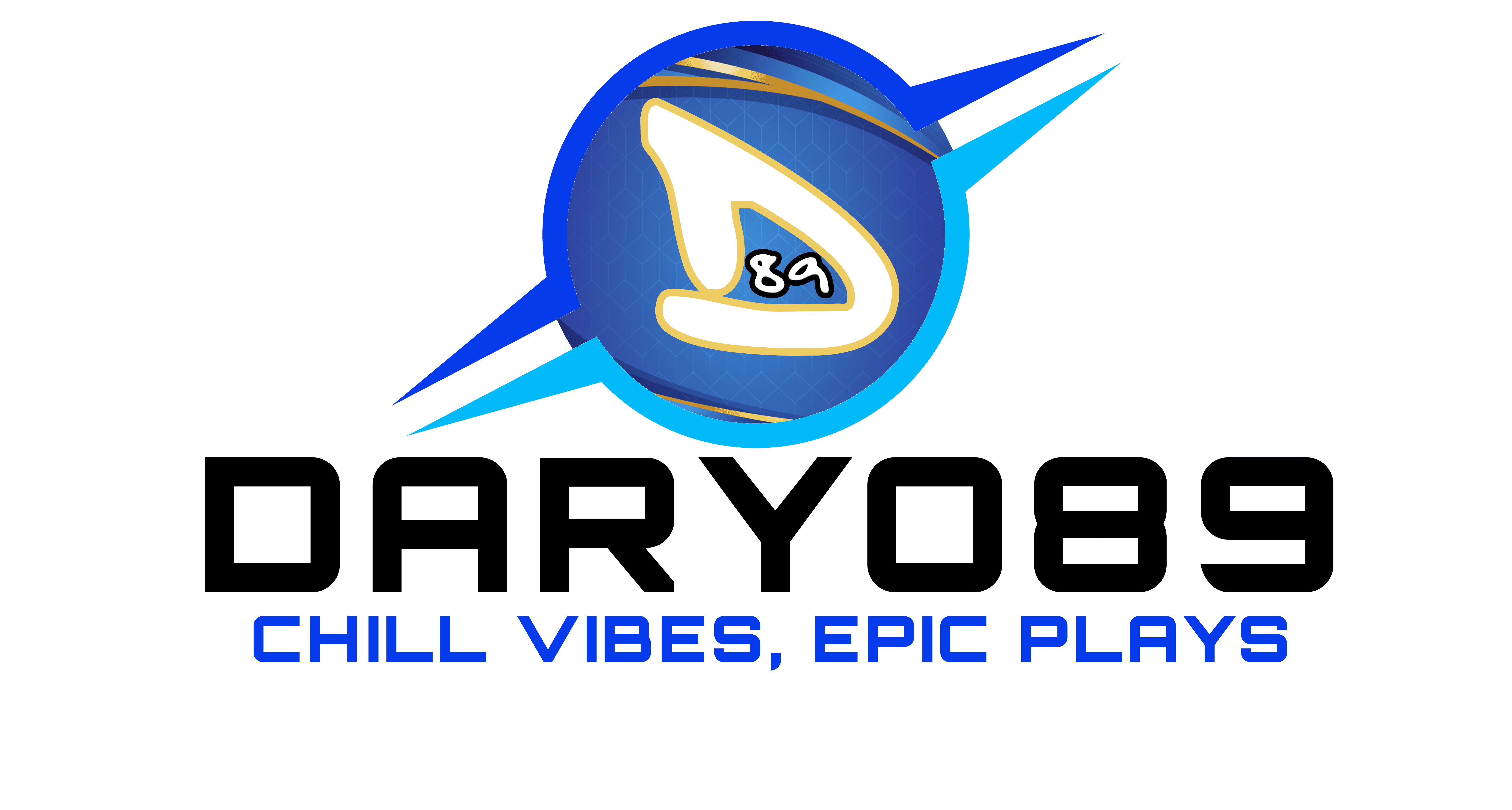





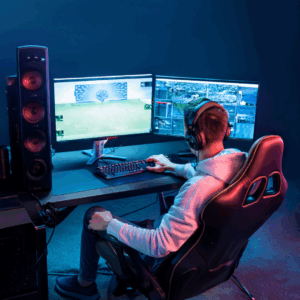

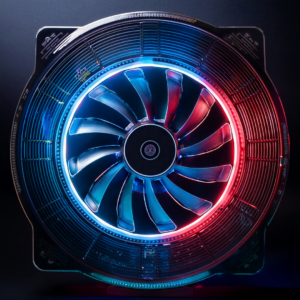
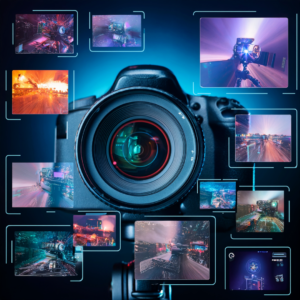
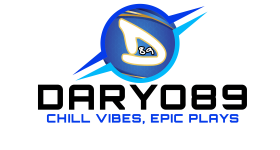

Add comment